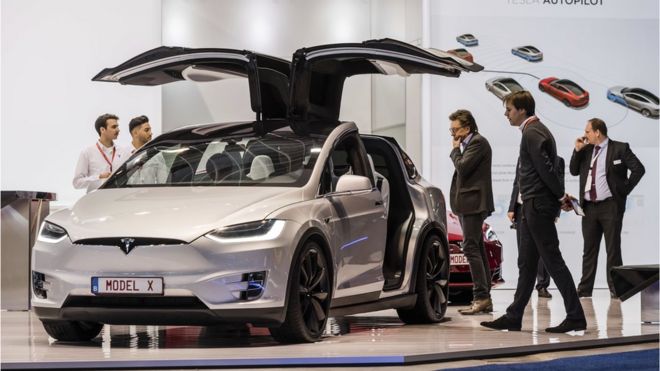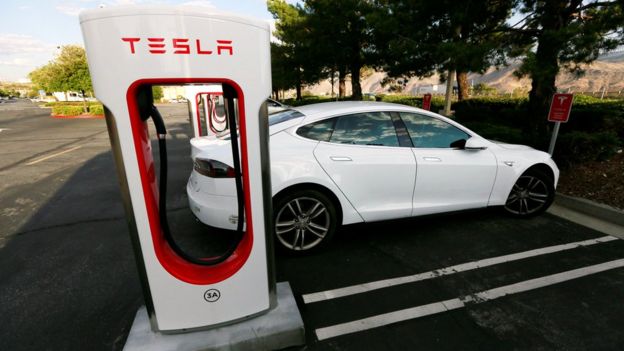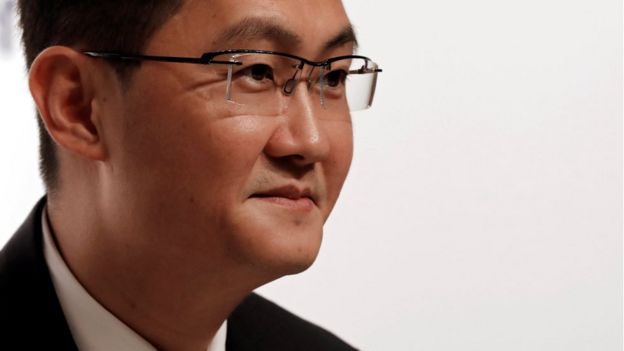http://www.bbc.com/zhongwen/trad/business-39427729?
美國電動車巨頭特斯拉:中國騰訊入股為「被動投資」
 AP
AP
特斯拉(Tesla)提交給美國證券交易委員會(SEC)的監管申報文件顯示,騰訊本月份收購了特斯拉5%的股權。
但特斯拉稱這次收購為「被動投資」,這意味著騰訊還無法在特斯拉的業務運作方面擁有發言權。
這起交易涉及金額達到了17.8億美元。消息宣佈後,特斯拉股價周二上漲2.7%,成立僅僅14年的特斯拉市值達到450億美元,在汽車行業僅次於通用和福特。
市場普遍認為騰訊的投入為特斯拉即將推出的大眾車型Model 3 提供了重要的資金支持。本月稍早時候特斯拉宣佈,希望通過出售股票和債券等方式為新車型的開發和推廣募集12億美元資金。
 REUTERS
REUTERS
在香港上市的中國互聯網科技巨頭騰訊是亞洲最大的科技公司之一,目前市值達到了2750億美元,約為特斯拉市值的六倍。
申報文件顯示,騰訊通過旗下黃河投資(Huang River Investment Limited)以17.78億美元在公開市場收購了特斯拉816.75萬股股票,佔股5%。
騰訊成為特斯拉第五大股東,前四大股東分別為特斯拉公司創始人及現任CEO埃隆•馬斯克(Elon Musk),持股大約21%;富達投資(Fidelity),持股14%;英國投資基金Baillie Gifford,持股8.2%;美國投資基金普信集團(T. Rowe Price),持股7.3%。
除了給Model 3籌錢 特斯拉還想要什麼?
 REUTERS
REUTERS
特斯拉去年在中國營收增長超兩倍,但數字並不樂觀。這可能是馬斯克(Elon Musk)在騰訊入股消息宣佈後將騰訊成為「投資人和顧問」的原因。
馬斯克周二(3月28日)在推特上說:「很高興騰訊能成為特斯拉的投資人和顧問。」
馬斯克沒有解釋「顧問」的具體角色,但他在另外一條推特上說,特斯拉的新車型Model 3沒有吸引到太多來自中國的訂單。這款新車型計劃在今年晚些時候在美國上市。
特斯拉在中國的數據並不樂觀。今年3月,特斯拉宣佈,其2016年在中國的營收突破10億美元,較2015年增長兩倍多。按照去年營收計算,中國成為特斯拉第二大市場,僅次於美國。
但從絶對數據看,2016年1-11月,中國特斯拉的進口量是8500輛。業內人士稱,如果不能實現本土化生產,特斯拉在競爭激烈的中國新能源車市場很難實現較大突破。
特斯拉一直對中國市場寄予厚望。中國已是全球最大的新能源汽車市場,特斯拉在中國的市場份額仍然微乎其微。2016年1月至11月,中國新能源汽車生產量為42.7萬輛,銷售量為40.2萬輛。
事實上,相對於中國新能源汽車的巨大容量,特斯拉在中國的成績非常普通。2015年,僅在香港一地,特斯拉就賣出了2221輛Model S。
今年1月特斯拉公布的數據顯示,這家硅谷汽車製造商未能完成2016年全年至少8萬輛汽車的交付目標。
此次投資特斯拉並成為其第五大股東的騰訊憑借微信等應用工具積累了大量用戶,目前正大舉進軍汽車產業,已投資的對象包括中國網約車公司滴滴,還投資了至少兩家中國的新能源車生產商。
「對於特斯拉來說這當然是棋局的重要一步,」汽車市場研究公司LMC Automotive預測部門的高級副總裁傑夫•舒斯特(Jeff Schuster)認為,這些現金流入還能幫助特斯拉開拓中國市場。
對於騰訊來說,未來和特斯拉可能的合作領域將包括無人駕駛的電動汽車,以及借此技術開發娛樂到電子商務、物流等輔助項目。
摩根士丹利分析師亞當•喬納斯(Adam Jonas)說,騰訊和特斯拉在這些方面開展技術合作「一點也不奇怪」。
這次股權投資並沒有直接促成兩家公司的技術合作,但兩家巨頭的牽手給市場留下了想像空間。







